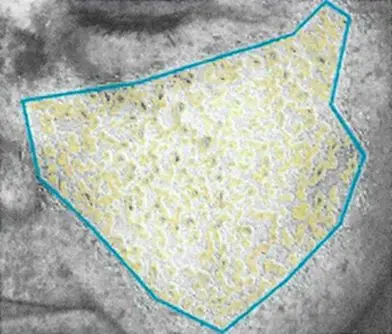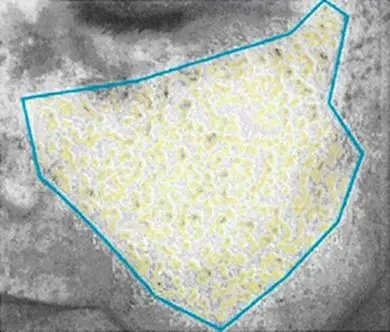| Item | Price | Qty | Total | |
|---|---|---|---|---|
 Loading Cart...
Loading Cart...How Can Cellulam Post-Procedure Lotion Improve Post-Procedure Outcomes?
Hyaluronic acid. Retinol. Salicylic acid.
Each of these popular skincare ingredients and more have enjoyed their moments in the spotlight. In fact, there’s a good chance your patients are using products with at least one of them right now. And they may have seen some benefits from using them.
Platelet-rich plasma (PRP) can also reverse sun damage and increase collagen production, resulting in a more youthful, radiant look.
But if your patients are looking for a product that was proven to enhance the results obtained from their PRP therapy, Dr. PRP’s Cellulam Post-Procedure Lotion may just be what they’re looking for.
Introducing Cellulam Post-Procedure Lotion
Sunspots, also known as “liver spots,” are a common source of frustration. While they’re not cancerous, patients may experience high levels of stress and anxiety until they receive reassurance from their doctor.
Sunspots can also make patients look older than they feel, affecting their self-confidence. Many turn to laser treatments, chemical peels, cryotherapy, expensive prescription creams, and other therapies in an effort to remove them. Many of these treatments can lighten sunspots but are ineffective at actually removing or repairing the sun damage. Others are expensive, and some of them can be less effective for people with certain skin types.
Dr. PRP’s Cellulam Post-Procedure Lotion offers a novel option. Your patients may see dramatic results in as little as 4 weeks with regular use of our Cellulam Post-Procedure Lotion. Many patients have reported enhanced outcomes and improved satisfaction after using the Cellulam lotion in addition to PRP treatment.
In the images below, you’ll see an example of the results you can expect from the Cellulam Post-Procedure Lotion.

Before: 342 UV spots

After 4 weeks: 271 UV spots
The Key Ingredients in Cellulam Post-Procedure Lotion
So how does the Cellulam Post-Procedure Lotion achieve such remarkable results?
By using 3 key enzymes that target damaged skin and support cellular regeneration.
Unlike many other creams and lotions that try to lighten the sunspots, the Cellulam Post-Procedure Lotion can restore healthy, younger-looking skin.
The 3 key enzymes include:
-
Photolyase (derived from Anacystis nidulans, a species of blue green
algae): Photolyases are ancient flavoproteins with the ability to repair DNA damaged from UV
exposure. They find and correct pyrimidine dimers like thymine dimers,
cytosine dimers, and cytosine-thymine dimers.1 These dimers
are abnormal linkages that can create photolesions in the skin. Thymine dimers are also known to
block DNA replication and are considered a potential factor in the development of skin
cancer.
How effective are photolyases? One study investigated whether the addition of photolyase enhances the protection of traditional sunscreens. Ten participants were asked to apply either a regular sunscreen (SPF 50) or the same sunscreen supplemented with photolyase prior to sun exposure. The results showed that the formation of cyclobutane-type pyrimidine dimers (CPD) was up to 93% lower in the participants using the sunscreen containing photolyase.2 -
Endonuclease (derived from Micrococcus luteus, a UV-resistant
microbe): UV endonuclease of M. luteus was the first DNA excision repair enzyme to be
isolated from cell extracts.3 Endonuclease initiates
indirect removal of thymine dimers . This means that instead of breaking the
bond between the thymine dimers, endonucleases make incisions in the DNA strand on either side
of the UV light-induced CPDs. The nucleotides with the CPDs are then removed, allowing DNA
polymerase I to fill in the gap.
One study showed that the addition of DNA repair enzymes (photolyase and endonuclease) to sunscreens reduced CPDs by 61% in participants.4 -
Glycosylase (derived from Arabidopsis thaliana): Glycosylase
recognizes and initiates repair of free-radical damage caused by UV irradiation and normal
cellular metabolism. One trial demonstrated the addition of endonuclease, photolyase, and
glycosylase reduced the formation of CPDs and protein carbonylation, a form of irreversible
damage caused by free radicals.5
In another study, liposomes containing these 3 key enzymes were applied topically twice daily for 4 weeks to 32 participants with crow’s feet. At the end of the study, 72% of subjects noted improvement, showing that these enzymes can have a measurable impact on skin photoaging.6
In other words, these 3 enzymes work synergistically to reverse and repair damaged skin by addressing the root cause.
How to Use Cellulam Post-Procedure Lotion
Using the Cellulam Post-Procedure Lotion is simple.
- Cleanse the skin
- Apply one metered dose to the affected area twice daily
The product can be easily integrated into existing in-office skin care regimens.
Help Your Patients Say Goodbye to Sunspots
If you’re a skin care professional, chances are you’ve experienced your own share of frustration when it comes to sunspots and other signs of photoaging. You want to offer your patients something effective yet noninvasive and affordable. Perhaps you’re already offering PRP treatments but you want to enhance the results even further.
Dr. PRP’s Cellulam Post-Procedure Lotion has the ingredients your patients need in the precise quantities they need them.
If you’re new to PRP, check out our online store for all your PRP needs, including prp kits and prp centrifuges. You can also call us at (844) 377-7787 (DR-PRP-US) . Our friendly customer service representatives will be happy to help you.


